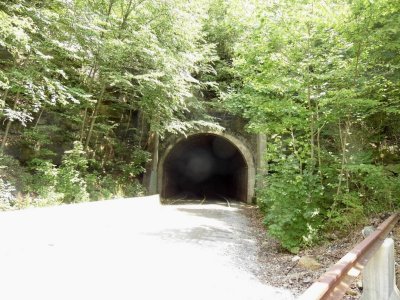JonDouglas
Senior Member
- Location
- New England
I am a little slow learning stuff I need to learn with drone, if not regular, photography The problem was (and perhaps still is) that I got so hung up with the fun and novelty of the drone that I wasn't paying nearly enough attention to things like best altitude, view angle, sunlight, distracting (from the photo subject) objects, etc. Another distraction was/is battery life. With this drone, I have about 25 minutes of flight time before the thing comes down. I was overly-worried about getting the drone back to where it started that I hurried the whole process.
The process was launch, maneuver enough to get GPS lock, go up, yaw (i.e. point), go toward, adjust yaw for best angle, shoot, come back and land ASAP. The good news, and a concept I am adjusting to, is that you can fly near the edge of the battery life envelope, hit the HOME button and the drone will come back to where it started. Then, hit the LAND button, relax and watch it land. This assumes you took off from a good flat area or from atop the landing pad case. This drone is smart enough to know when it is running out of juice and will land itself in the safest place it can find but you really don't want that to happen (e.g. if it happens to be over something you don't want to be over like water, building or posted property). You, not battery life, should choose the landing spot. I prefer landing on top of its carrying case, which the drone will do if it can see the logo on the case (or anything else).
Pushing aside these distractions (i.e., novelty, fun, battery life, piloting, UAV allowable, etc.) the challenge of getting the best, most interesting photo looms large. You're working in a 3D space now. To that end, I've been experimenting. One experiment was with a simple flower garden beside a house. Although not stunning, I thought the tiny garden might make an interesting photo so I took several from the ground, one of which is below.

I used the photo above as the basis for the drone flight, thinking this would probably be the best angle for the drone given the surrounding trees and wires. Wires are something you need to pay close attention to as this drone can autonomously avoid most things but not wires. After launching the drone , I moved it around a little to get a GPS lock, went up and grabbed several pictures at different altitudes while being mindful of the rule of thirds. Below may be the best of those taken.

The picture takes in virtually all of the target flower garden and surrounding area, including the pond in the background that you might not see from ground level. By drifting a little more to the left, I might have gotten in more of the house. The reason I selected the above as perhaps the best of the bunch is that there's a not unreasonable balance of garden, water and sky (i.e., rule of thirds as it applies vertically). As for color and stuff, I am way too early in the game to start playing with filters and ISO settings, preferring to leave the drone camera on AUTO.
If you've learned anything from this brief diatribe, good. What's better if I can learn anything from you. To any extent where your photographic efforts have resulted in learning something, I'd love to hear about it and, hopefully, learn more.
The process was launch, maneuver enough to get GPS lock, go up, yaw (i.e. point), go toward, adjust yaw for best angle, shoot, come back and land ASAP. The good news, and a concept I am adjusting to, is that you can fly near the edge of the battery life envelope, hit the HOME button and the drone will come back to where it started. Then, hit the LAND button, relax and watch it land. This assumes you took off from a good flat area or from atop the landing pad case. This drone is smart enough to know when it is running out of juice and will land itself in the safest place it can find but you really don't want that to happen (e.g. if it happens to be over something you don't want to be over like water, building or posted property). You, not battery life, should choose the landing spot. I prefer landing on top of its carrying case, which the drone will do if it can see the logo on the case (or anything else).
Pushing aside these distractions (i.e., novelty, fun, battery life, piloting, UAV allowable, etc.) the challenge of getting the best, most interesting photo looms large. You're working in a 3D space now. To that end, I've been experimenting. One experiment was with a simple flower garden beside a house. Although not stunning, I thought the tiny garden might make an interesting photo so I took several from the ground, one of which is below.

I used the photo above as the basis for the drone flight, thinking this would probably be the best angle for the drone given the surrounding trees and wires. Wires are something you need to pay close attention to as this drone can autonomously avoid most things but not wires. After launching the drone , I moved it around a little to get a GPS lock, went up and grabbed several pictures at different altitudes while being mindful of the rule of thirds. Below may be the best of those taken.

The picture takes in virtually all of the target flower garden and surrounding area, including the pond in the background that you might not see from ground level. By drifting a little more to the left, I might have gotten in more of the house. The reason I selected the above as perhaps the best of the bunch is that there's a not unreasonable balance of garden, water and sky (i.e., rule of thirds as it applies vertically). As for color and stuff, I am way too early in the game to start playing with filters and ISO settings, preferring to leave the drone camera on AUTO.
If you've learned anything from this brief diatribe, good. What's better if I can learn anything from you. To any extent where your photographic efforts have resulted in learning something, I'd love to hear about it and, hopefully, learn more.





